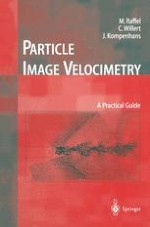Results from several applications of particle image velocimetry (PIV) to unsteady flows at a laboratory scale have been published, and commercial products are now available for more general laboratory use, but for certain industrially important applications, reliable equipment is often available only from in-house research and development teams. This PIV handbookis intended to transfer know-how from PIV development laboratories to end-users in industry and universities. The book discusses the scientific and technical aspects required to set up a PIV system, allows users to assess the problems involved in the application of PIV, and enables them to design, optimize, and use PIV systems to meet their special needs.
